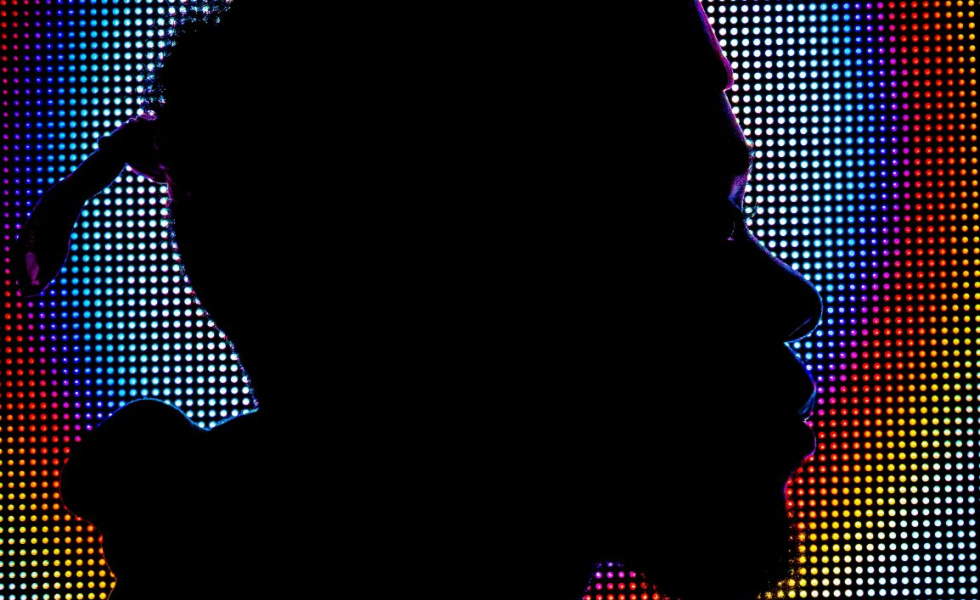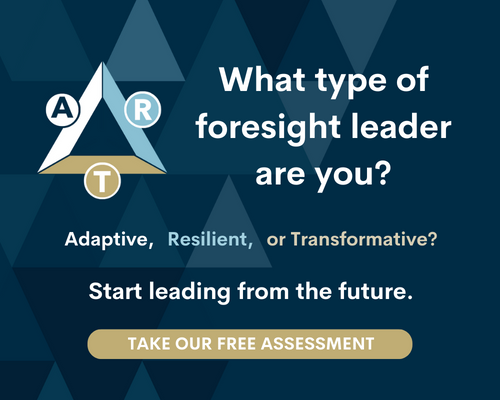Reimagining Life in the Cloud

Many are wondering what is in store for humanity after The Great Pause. Beyond asking “When?” Or “How?”, a better question may be, “Where will our futures take place?”
Only a few short years after the Internet humbly changed the world as we knew it in the late 1980s and early 1990s, researchers and social scientists were already speculating about the vast potential that could emerge from our newfound web of connectivity. In an article entitled “Rules For Radicals: Settling the Cyber Frontier,” Riel Miller, Head of Foresight and Futures Literacy at UNESCO, explored the ways in which the Internet might both alter and evolve how we define life as a species:
- Universal ‘cyber-citizenship’ or a means for affirming and controlling one’s existence – on-line identity, avatars and reputation – in the virtual worlds made accessible by the net
- Production systems without offices, factories and commuting
- Property right laws and payment systems that enable new business models based on tracked ‘credit for mash-ups’ and disintermediated ‘peer-to-peer’ transactions
- A universal ‘commons’ (open access and semantic web) for all human knowledge
- Ways of living that reduce the physical weight of human existence. (1)
Approximately 30 years later – and despite the fact that the Internet has become an integral part of our daily lives – we are still no closer to making this list of digital attributes a common reality for the majority of humanity. We have certainly seen e-commerce and social media alter the global zeitgeist, but these practices have arguably had more negative than positive impacts on the health of governance, economics and social cohesion. Instead of controlling our online identity, many people feel that their personal data has been misused by large corporations and political parties; virtual worlds as landscapes for transformative access to education and innovation are seen as playgrounds for those on the fringe; and, the transfer of physical activities into web-based platforms as a means to reducing our carbon footprint is still an afterthought.
It’s not as if many amazing individuals and groups haven’t been working on these ideas (and many more) over the past 30 years. Rather, we have yet to see the great need to shift our paradigms concerning the intentional development of virtual environments for humanity. Our long-standing (but also obsolete) system of short-term thinking and aversion to complex realities has created a mass deficit of imagination, and we have subsequently ignored the need to continually evolve humanity into these emerging landscapes. We’ve trained and educated almost no one to inhabit new worlds of thought and activity, and our collective potential still lies dormant – or worse yet, it is rapidly deteriorating. As Miller noted in a recent article, “Why do we think that the best strategy for our survival and well-being is to build heavy, imposing, rigid fortresses when we live in a swirling cloud?” (2), we have continued to stand by as the Internet has been hijacked by political and economic interests from an obsolete era, and very little has changed in the population at-large.
And then came COVID-19.
Suddenly, everyone has been thrust into the virtual world with little to no preparation or training. Teachers and parents are expected to educate our children online when the dynamics of the digital landscape are very different than the old-world systems with which we are familiar; the digital divide and lack of access to the Internet for large swaths of the population have thrown chaos into the face of our inequitable and non-resilient systems; organizations have scrambled to employ virtual platforms to save work as we know it; and, individuals have sought to leverage existing social media, e-commerce and collaboration websites to expand their presence into an exploding gig economy to take advantage of low-hanging fruit or stay afloat during the crisis. Coupled with a mounting list of civilizational threats such as climate change, growing inequality and a distrust of intellectualism, this pandemic is acting as an accelerant to reimagining life inside of Miller’s “swirling cloud”, but the great migration will require a much more purposeful, diligent and concerted effort if we are to see those clouds produce the much needed rain that can enrich the fertile ground of the web.
While speaking at The Long Now Foundation on the topic of “Six Easy Steps To Avert the Collapse of Civilization,” famed neuroscientist and bestselling author David Eagleman posited that
“We have accidentally invented a technology which I think obviates many of the threats that have caused previous civilizations to collapse… I think we are at a watershed moment in our history, and this may just be the thing that saves our future.” (3)
Among the many civilization-saving (as well as life-altering) capabilities that he assigned to the Internet, several ideas resound with unavoidable clarity:
- Ancient civilizations would often physically congregate during viral epidemics to demonstrate their compassion, solidarity and fortitude. Our relatively nascent science around viruses has revealed that this is the opposite of what we should do, but the need for social distancing and isolation while also connecting for civilizational advancement can be accomplished through the virtual nature of the Internet in practices such as telepresencing for work and social development, telemedicine for public healthcare, and digital tracking for optimal delivery of resources.
- Many inventions and discoveries were only echoes of well-established information from an earlier time. Sadly, the amnesia of history that is often a result of lost knowledge from conquered, colonized or collapsed civilizations has led to countless incidences of human suffering. (4) Unique throughout history, the Internet now allows us to discover something once, latch onto that idea, distribute it across the entire planet for others to learn from and expand upon, and ultimately – as well as quickly – create a redundancy that is immune to fires, floods and fevers.
- The dissemination of news needed by individuals and groups for both survival and innovation has traditionally been impeded by time, distance, topic discrimination and non-local media bias, but the web allows for a decentralization of “citizen journalists” who can spread relevant information across neighborhoods, regions and the globe in an on-demand and just-in-time network. The net allows us to generate an immediate response in the face of a crisis, both through digital communication and physical sensors that act as a planet-to-web interface. As Eagleman noted, “With advanced information networks, humans grow closer to omniscience and omnipresence.”
- Throughout history, tyranny has hobbled cultural progress. The Internet reinforces local information and nested feedback loops which “democratizes the flow of information by giving open access to everybody,” thus keeping governmental censorship and deception in check. More recently, we have seen despotic leaders use the Internet to divide populations or broadcast messages of fear and nationalism, but this only reinforces the fact that we must dive headlong into a global effort to create digital awareness, access and participatory citizenship as a means to frame the web for human development. (5)
- Crowdsourcing for increased innovation and transdisciplinary discovery has been touted for decades, but we have barely scratched the surface on the potential for open-sourced problem solving and opportunity emergence that is offered through a digital world. Research shows us that the development of human capital depends on open access to education, and this in turn results in greater economic ideation, invention and equity. Such widespread access and civilizational security depends on the maturation of the Internet and the promotion of a digital citizenry, opening the gates to education in a way that was never before possible.
- When society exceeds its carrying capacity in terms of energy, fighting ensues over limited resources. The web solves this problem by converting practices such as information storage or shopping for goods to the digital world, thus eliminating the need for paper trails, transportation redundancy and a myriad of other energy wasting activities. (6)
Indeed, Eagleman’s talk is timely – except it’s not. Interestingly, he gave this talk in 2010 – a full decade before the presently unfolding COVID-19 pandemic. The idea of creating a digital evolutionary platform that holds the potential to positively transform the human experience and aid in ecologically regenerative outcomes is not an idea whose time has come – it’s an idea that is long overdue.
In a 2017 paper entitled “The Body, Technology and Translation: Mapping the Complexity of Online Embodiment,” Seweryn Rudnicki addressed this unfolding exploration of the virtual human experience where body, identity, technology, reality and social constructs all intertwine. Speaking directly to our failure to keep pace with the ever-growing potential of a virtual world, he noted that, “Since the first decade of the 21st century, the Internet has become much more mobile, accessed in multiple channels, with numerous devices and used across a number of daily activities. It has also ceased to be commonly understood only as the World Wide Web accessible in browsers, becoming rather an infrastructure for a number of devices (from smartphones to cars) offering a vast number of services. For the sociological interest in the body, it is important that these changes have enabled new forms of interaction between physical bodies and Internet-related technologies, which can now be used not only to represent the body in specific virtual environments in the form of a picture, avatar or description, but also to offer a possibility to track, livestream and record a number of bodily parameters and activities. Yet the social theory of the body seems to be somewhat reluctant to respond to the challenges posed by the increasingly digitally saturated world.” (7)
Today, this infrastructure offers us a number of exciting ways for humanity to accelerate our great migration to the digital cloud:
- Simulate “Mirror Cities” for testing every aspect of physical development or social interaction in digital spaces.
- Virtual landscapes such as Magicverse, Decentraland and Fortnight that are redefining our traditional models of education, economic development, cultural sharing and entertainment.
- A “People Cloud” where passion and purpose can override “work as life” models, allowing individuals and groups to inhabit multiple projects simultaneously, and thereby increasing innovations and ideation for all of humanity.
- Digital Identities/ and Digital Citizenship that opens up new avenues to global connectivity, overcomes problems such as immigration and basic services for humanity, and dissolves the problems created by natural or national borders.
- Multiple Avatar Personalities that empower each of us to truly explore a Post-Human world.
These ideas only scratch the surface of the possibilities that exist in a more intentionally designed and inhabited digital world, and ideas of how to best utilize life in the cloud – ideas that hold the potential to solve many of our existing wicked problems – are exponentially multiplying by the day. However, purposefully fostering a great human migration to the web may no longer be the plot of some Sci Fi movie, and the Internet has certainly grown beyond being an external technology that can be viewed as a luxury. Rather, our present time has given us the opportunity to create new life-giving metaphors for this virtual world, and we would be wise to foster a more deliberate transition to a blended and generative digital reality.
References
- Riel Miller: https://www.yumpu.com/en/document/read/43089928/rules-for-radicals-settling-the-cyber-frontier-riel-miller
- http://bayoakomolafe.net/project/out-of-the-ashes/
- http://longnow.org/seminars/02010/apr/01/six-easy-steps-avert-collapse-civilization/
- (ex. The forgotten practice of inoculations being practiced in 10th Century China that wasn’t re-discovered in Europe until after countless plagues, or the destruction of vast stores of invaluable manuscripts housed in The Great Library of Alexandria)
- (ex. Using cell phone data to report local vote tampering practices in real-time, or breaking through the firewall of fortress governments to deliver information to citizens cut off from the rest of the physical world)
- (Yes, a more immersive digital world with a greater full-time population would also require more energy, but the solution would lie in the development of green energy – something that needs to happen regardless.)
- https://journals.sagepub.com/doi/full/10.5153/sro.4322

Frank Spencer
Co-Founder
Creative Director
In 2009, Frank founded Kedge – a global foresight, innovation, and strategic design firm which pioneered TFSX. Throughout his career, Frank has worked as a leadership coach and developer with entrepreneurs, social communities, networking initiatives, and SMEs, helping them in areas such as development, innovation, and networking.
Read More
